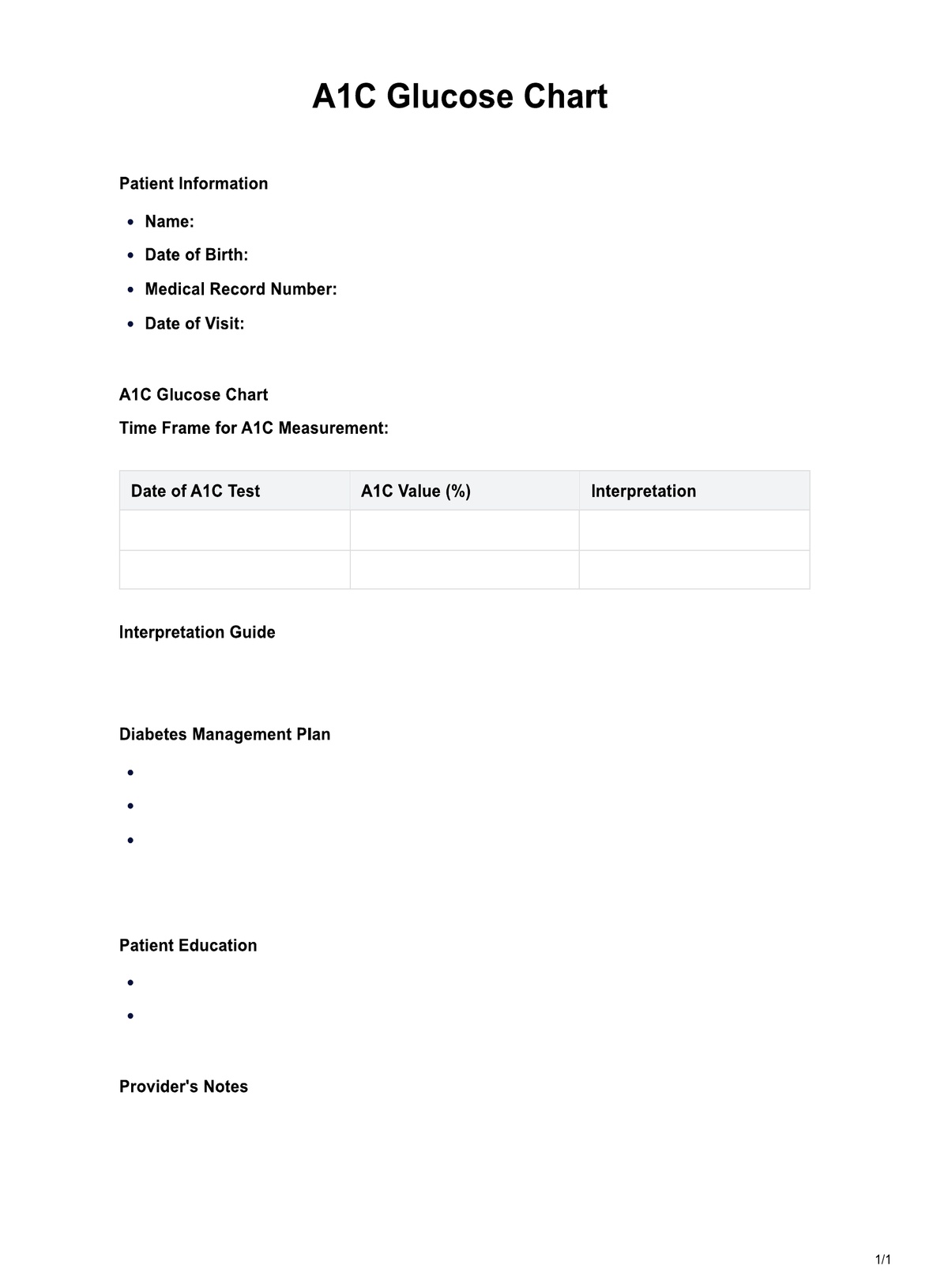A1C Glucose Charts are typically requested by healthcare providers, including doctors, endocrinologists, and diabetes educators, for individuals with diabetes.

A1C Glucose
Track A1C values with an A1C Glucose Chart. Easily monitor and manage diabetes for better health outcomes.
Use Template
A1C Glucose Template
Commonly asked questions
A1C Glucose Charts assess and monitor blood sugar control over two to three months. They are employed during diagnosis, treatment planning, and routine check-ups for diabetes management.
?
A1C Glucose Charts involve plotting the A1C value, typically expressed as a percentage, on a chart to assess blood sugar control. The chart aids in setting glycemic goals, evaluating treatment effectiveness, and guiding diabetes management decisions.
?
EHR and practice management software
Get started for free
*No credit card required
Free
$0/usd
Unlimited clients
Telehealth
1GB of storage
Client portal text
Automated billing and online payments











